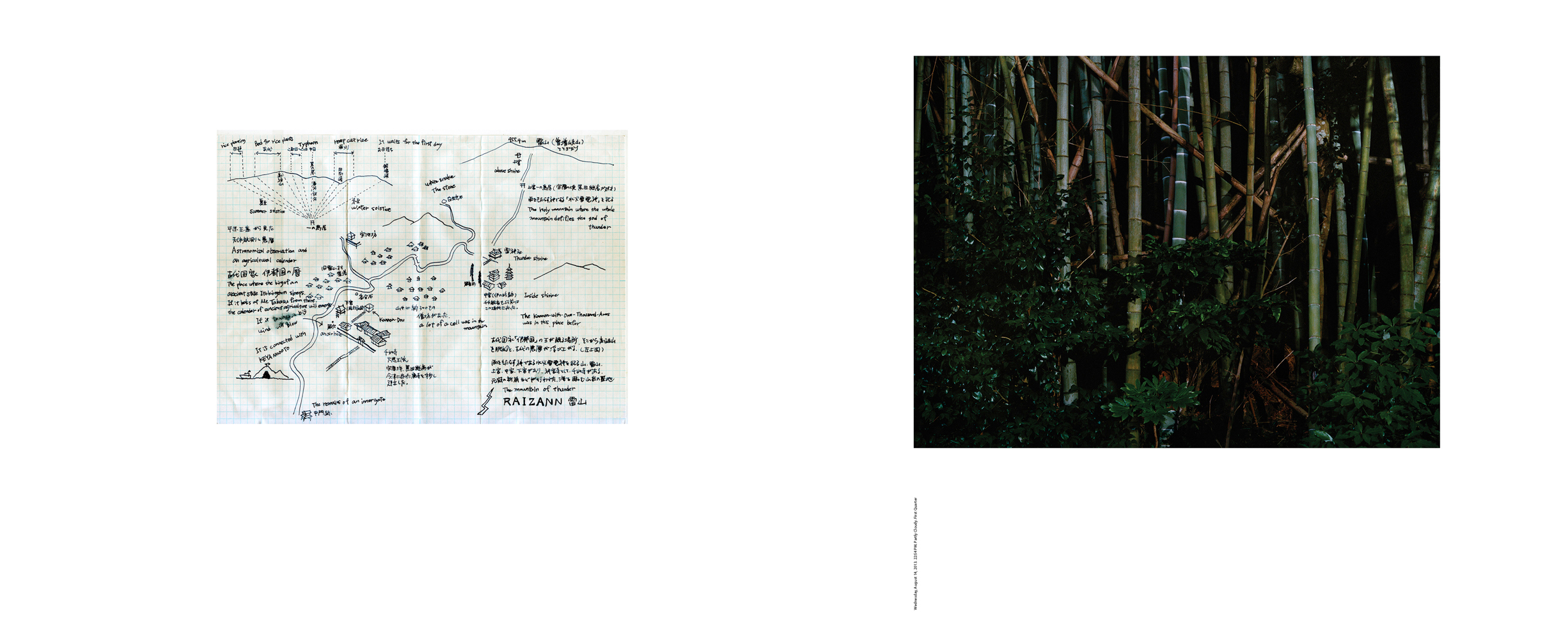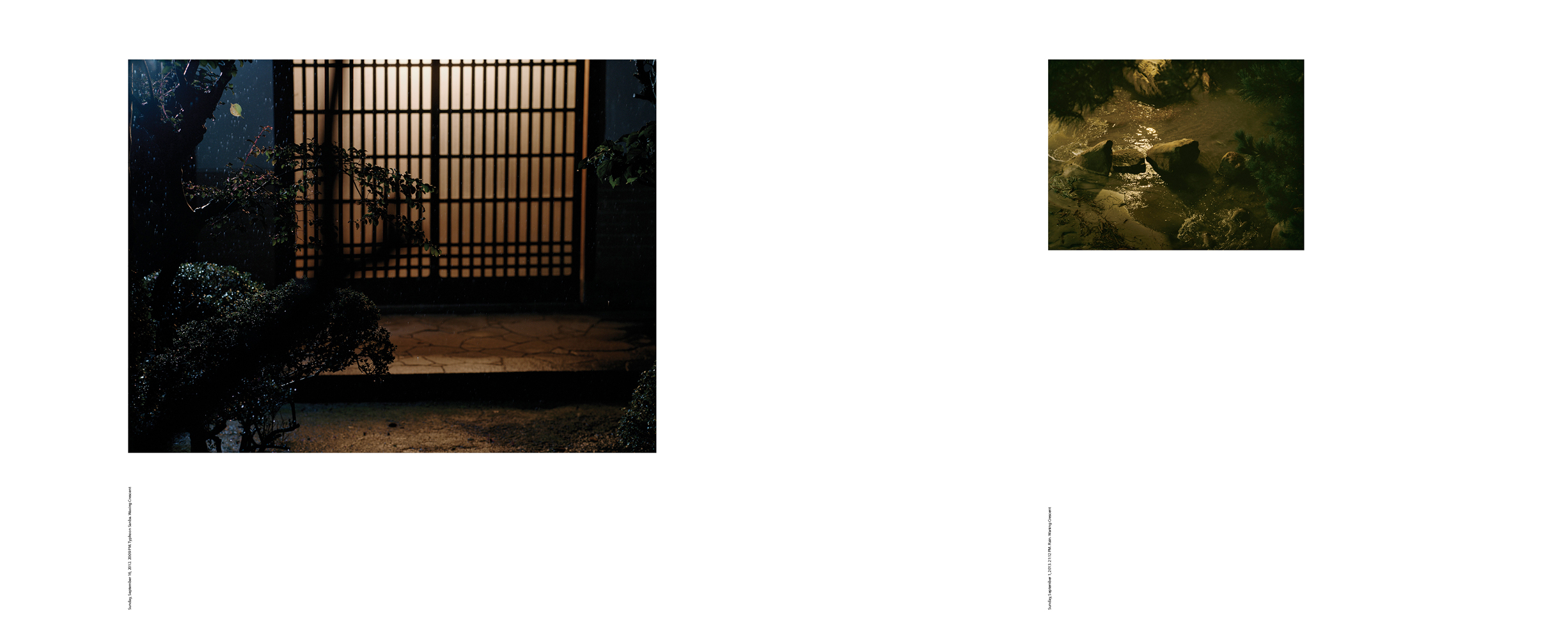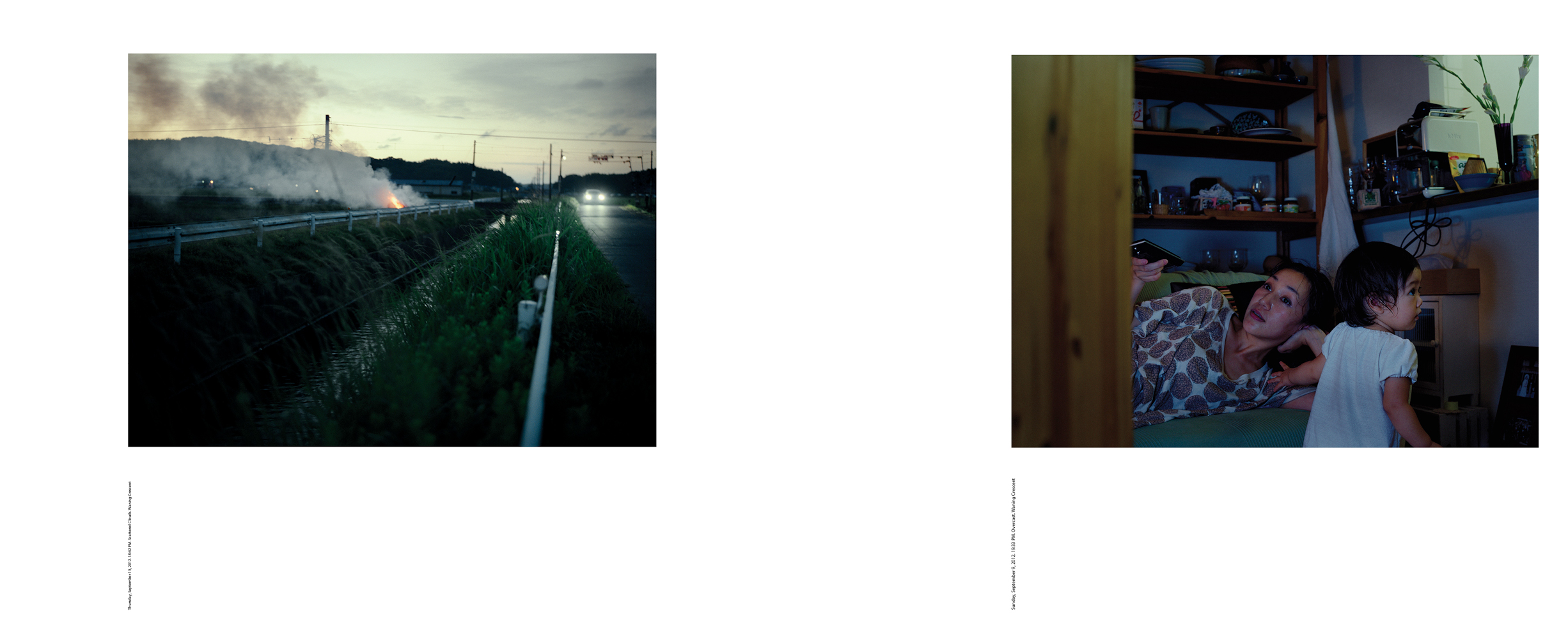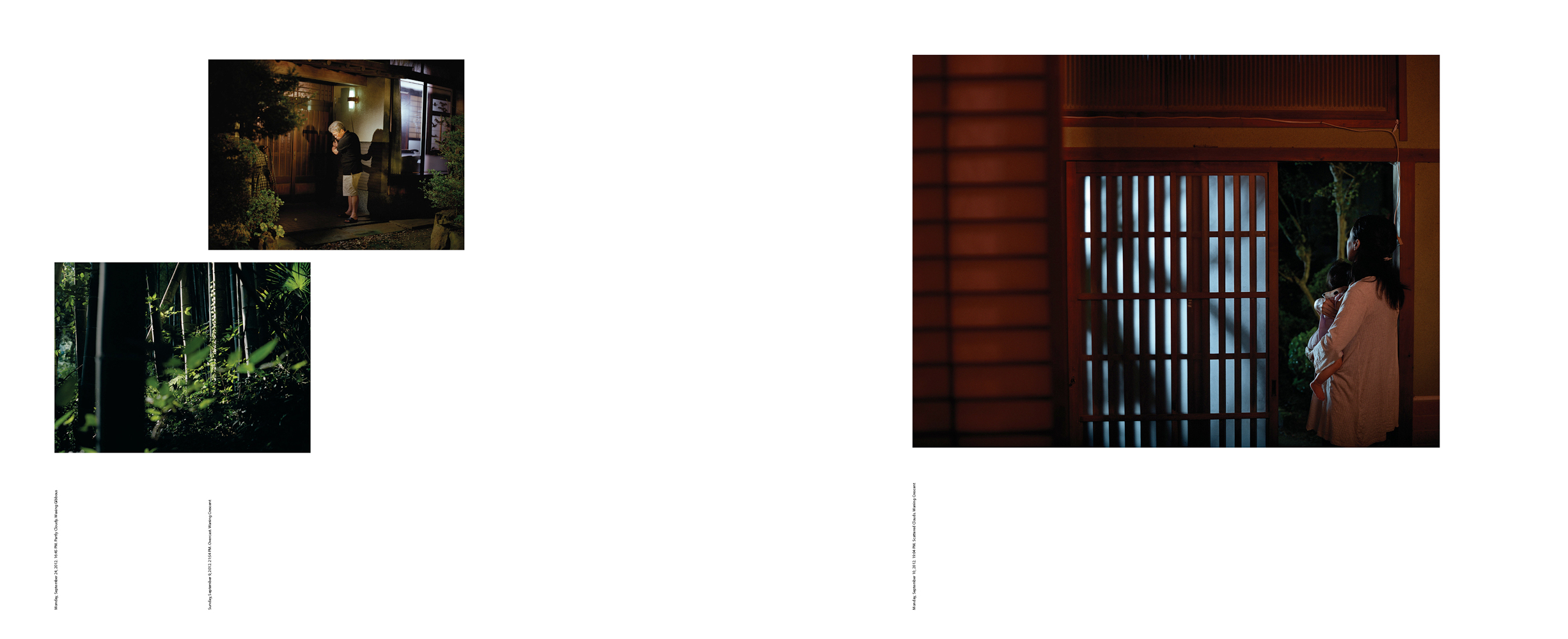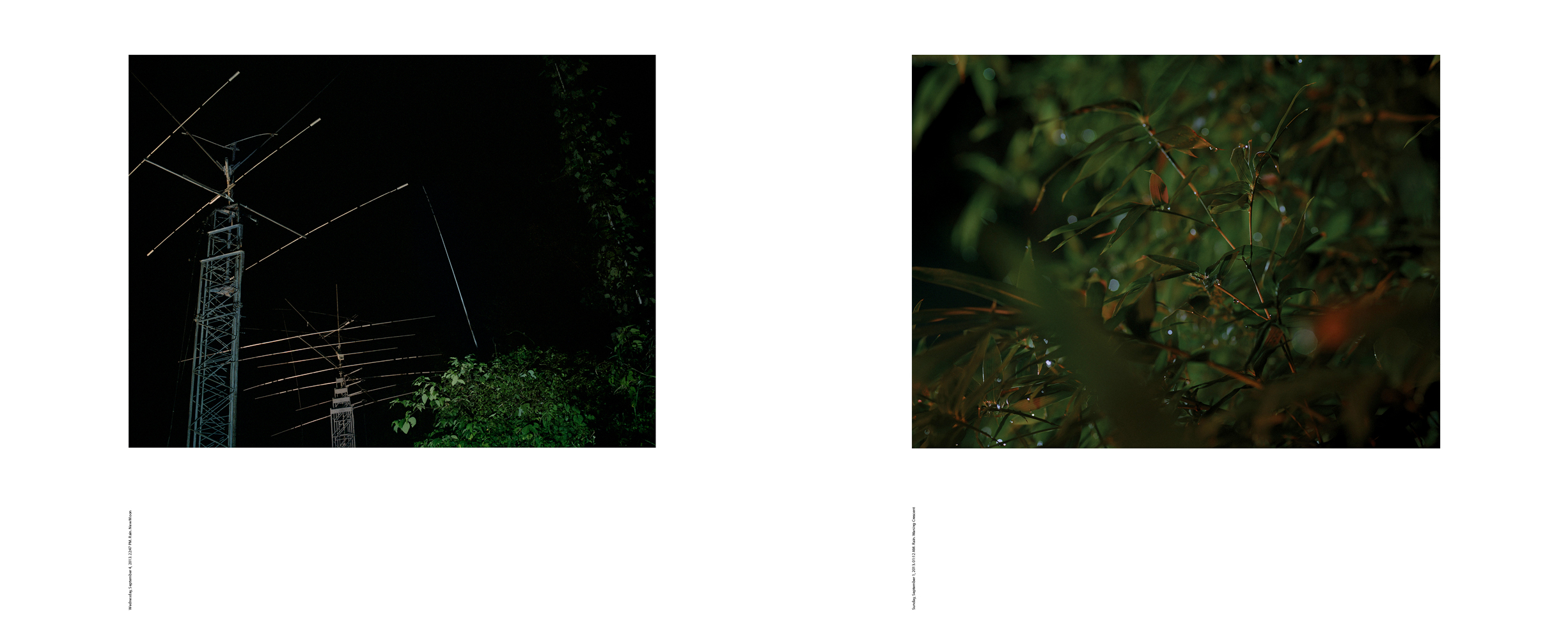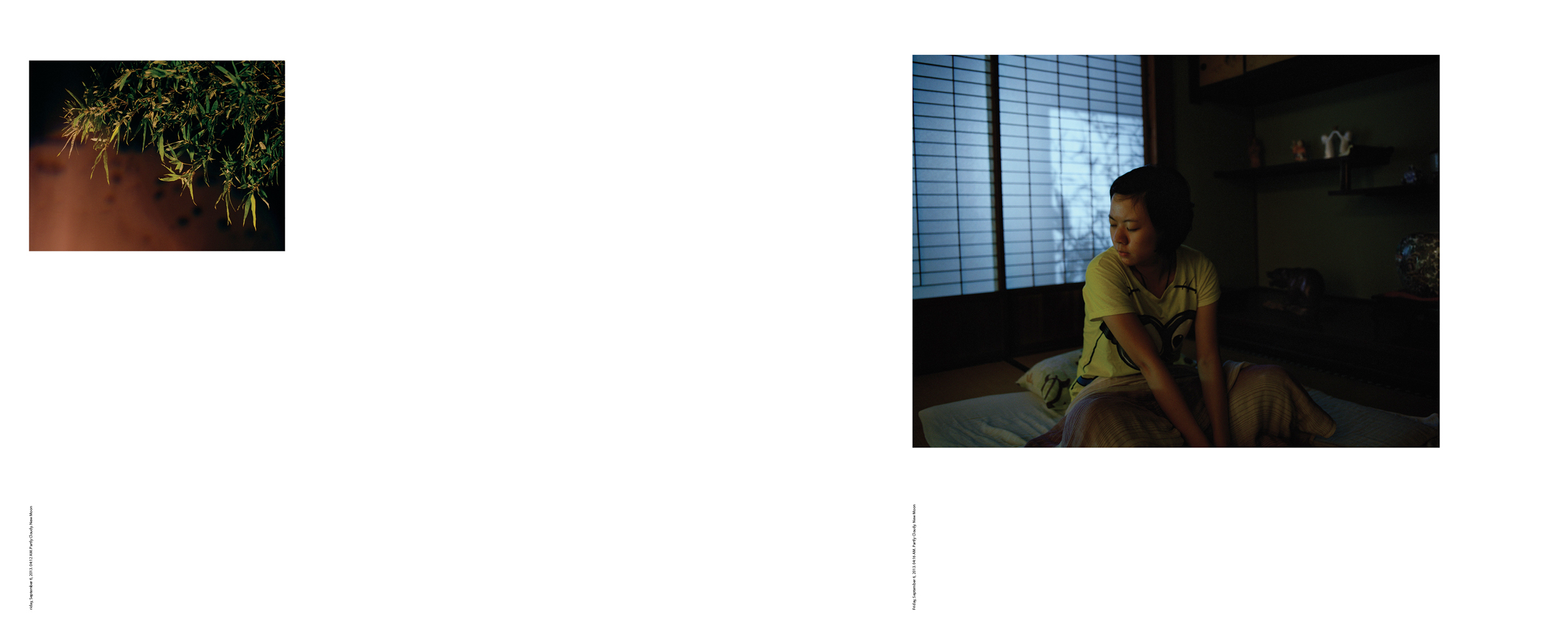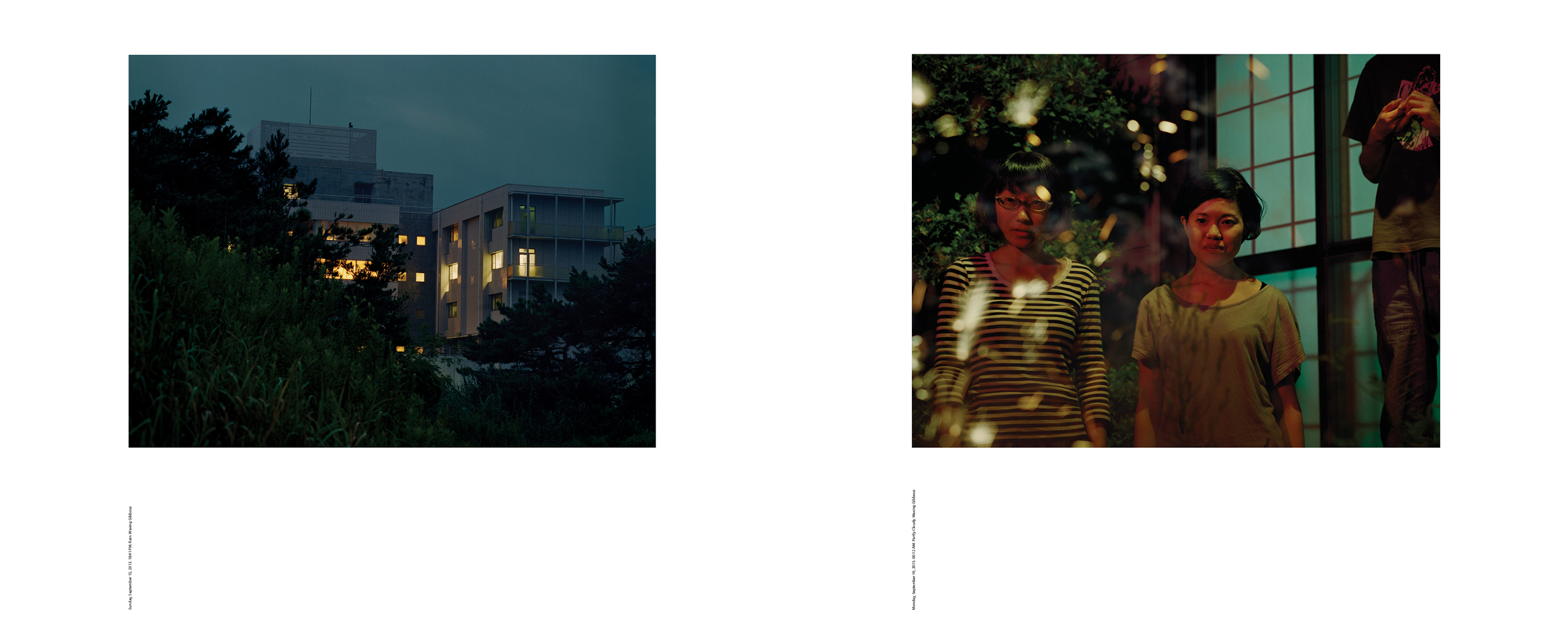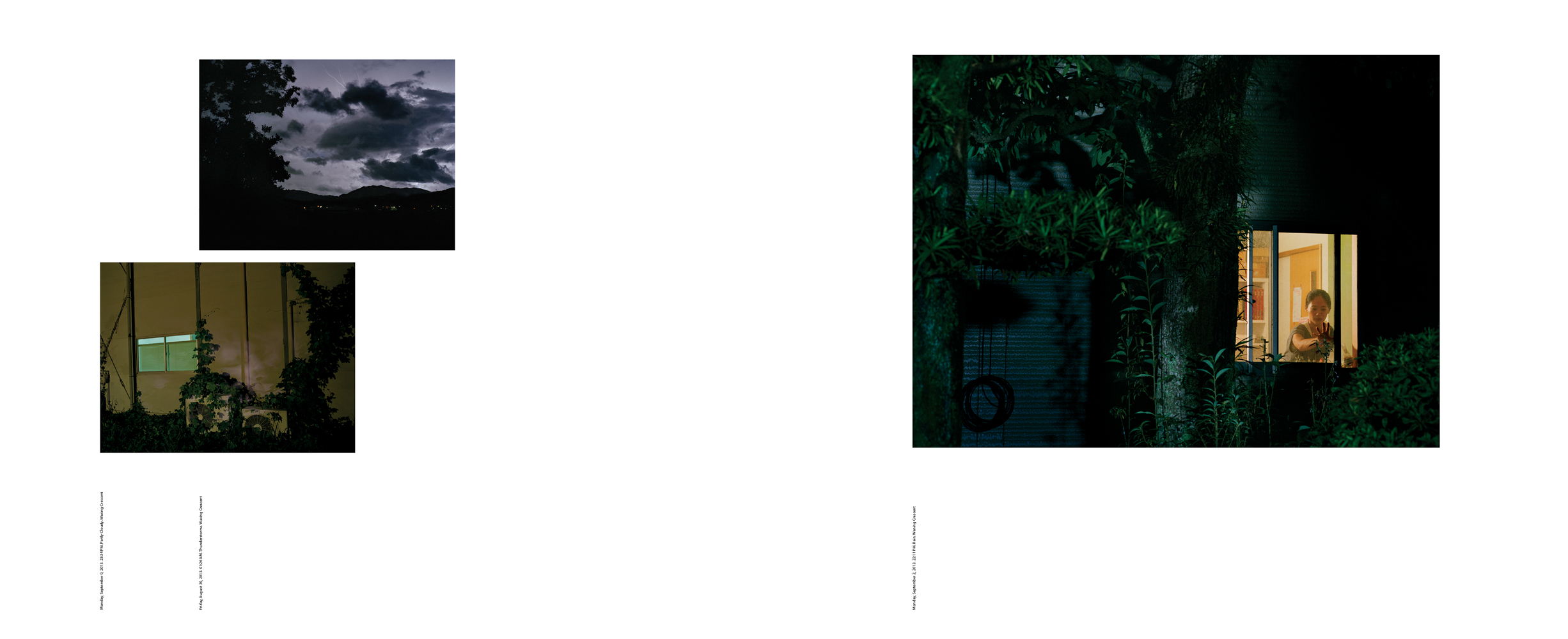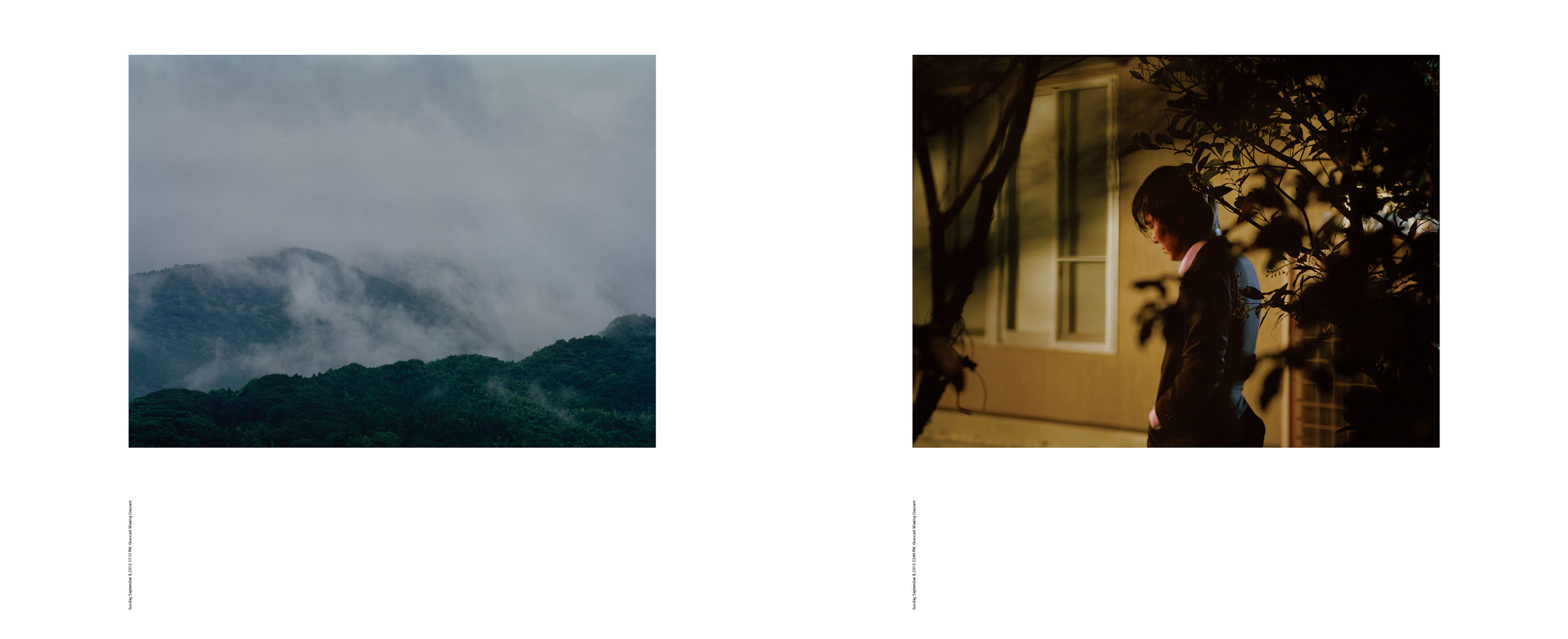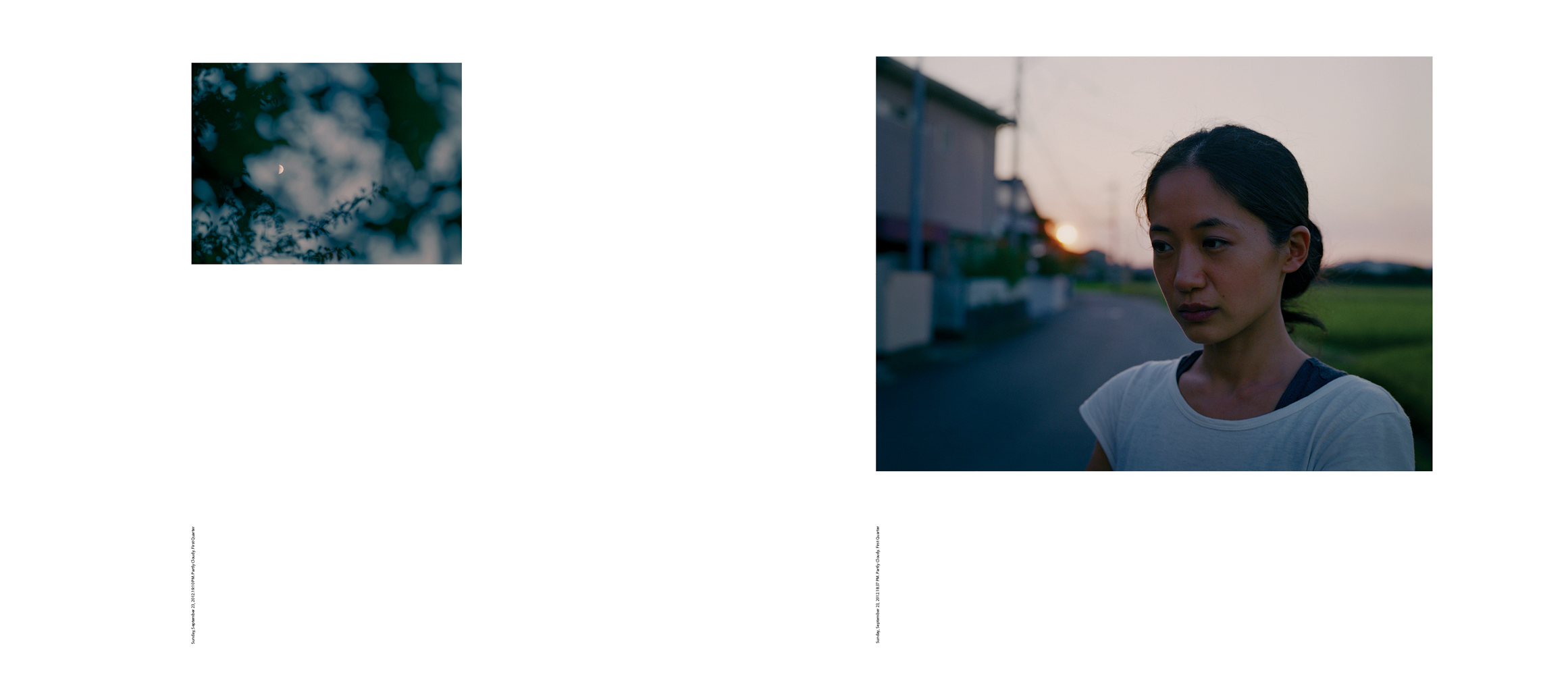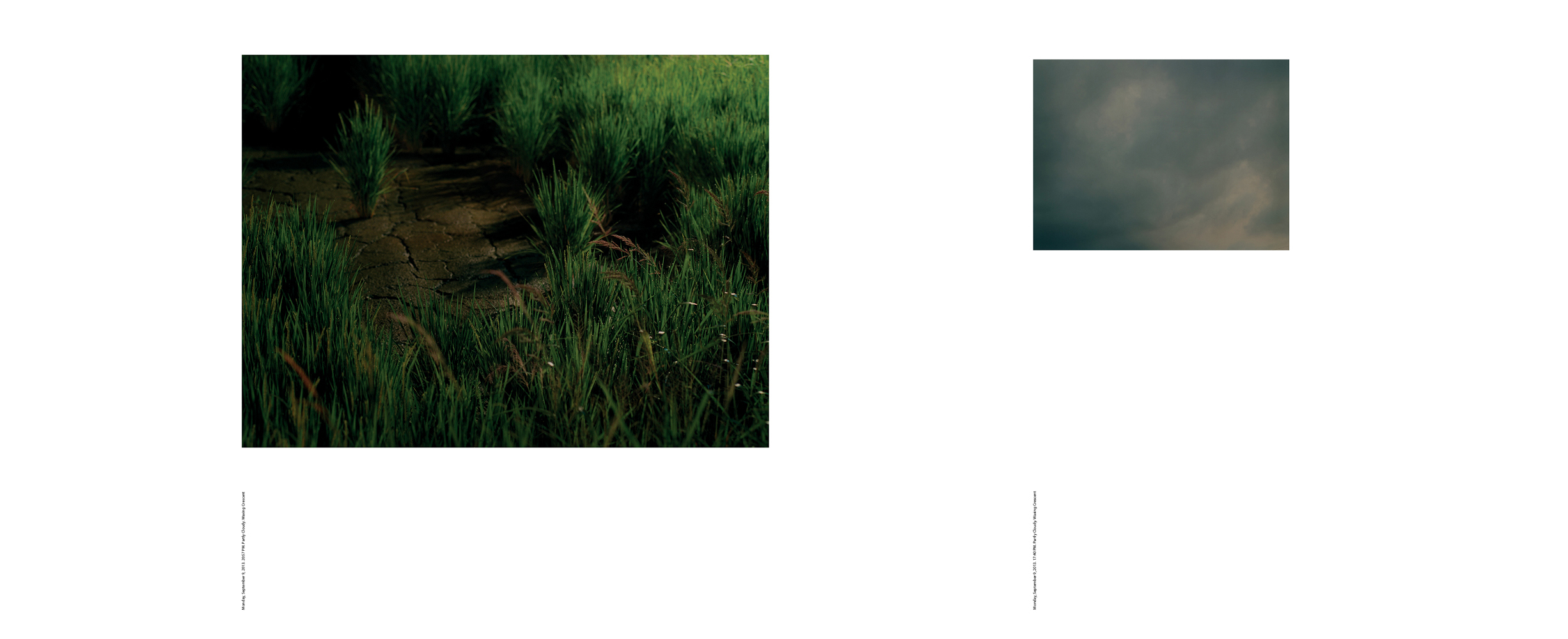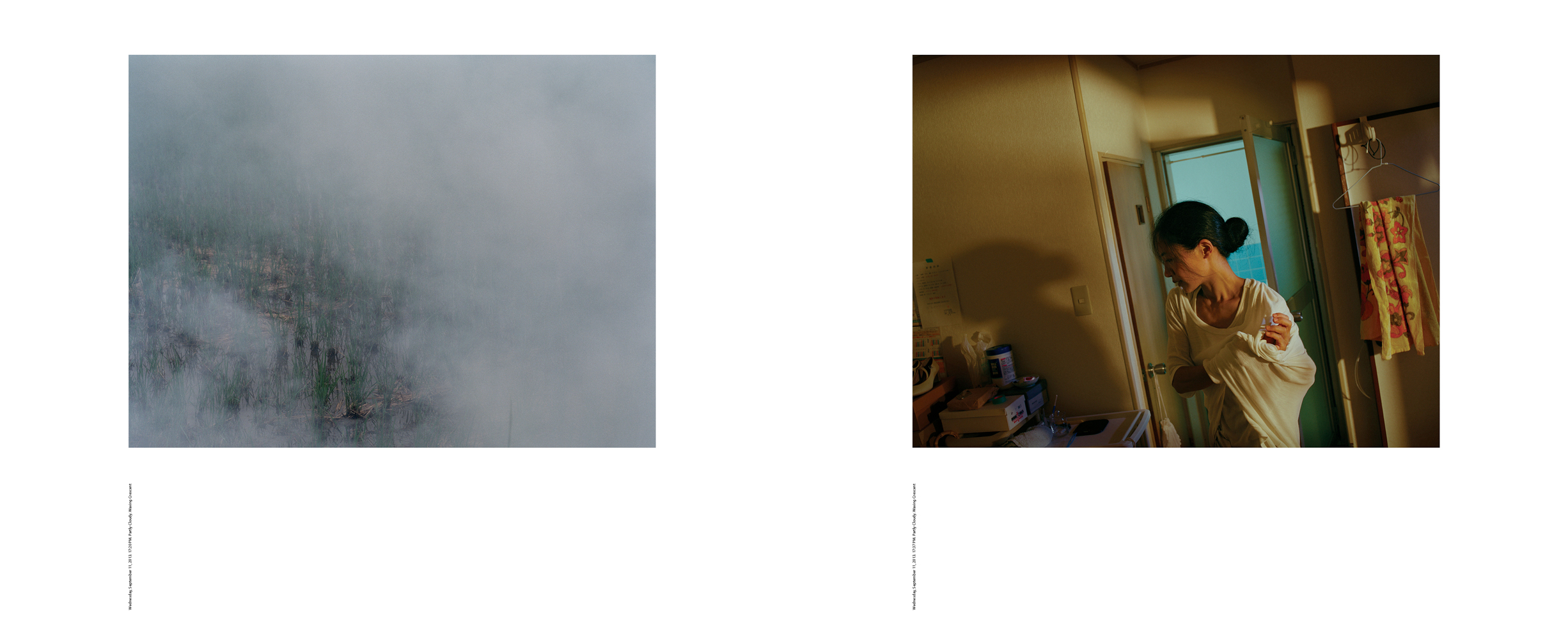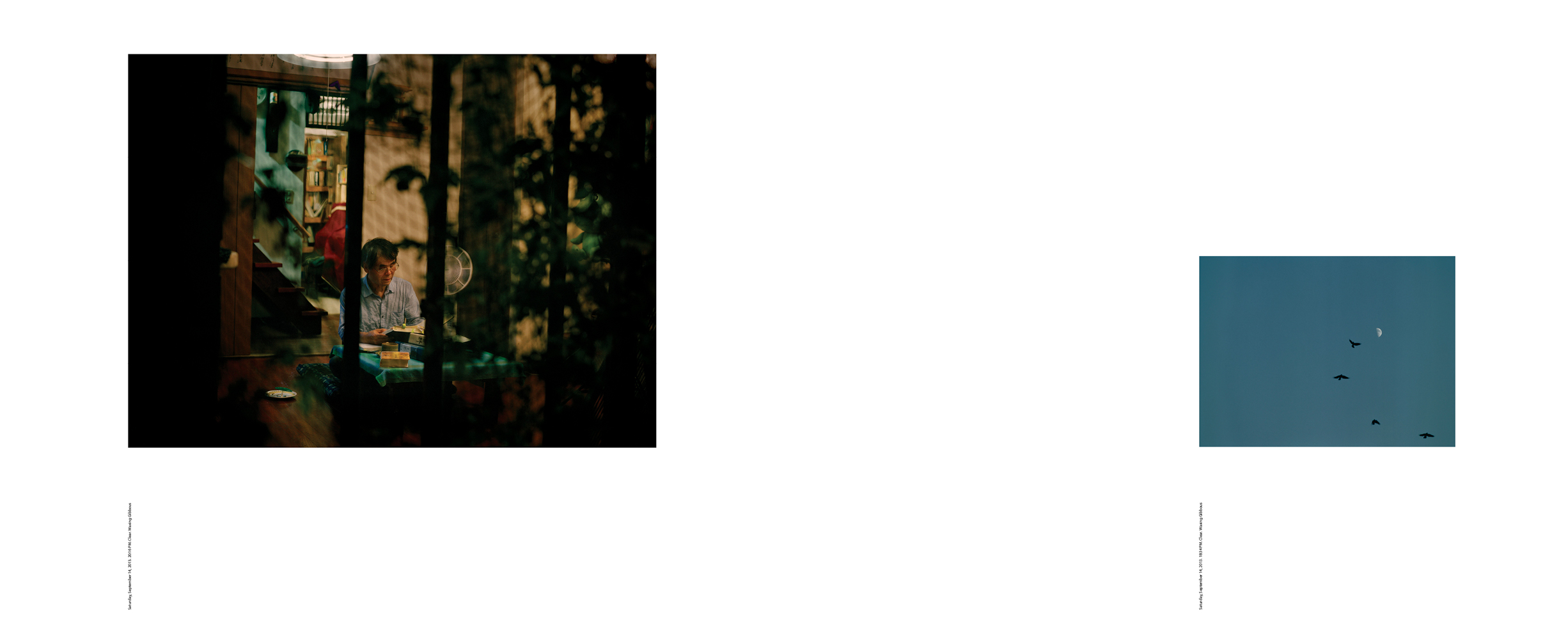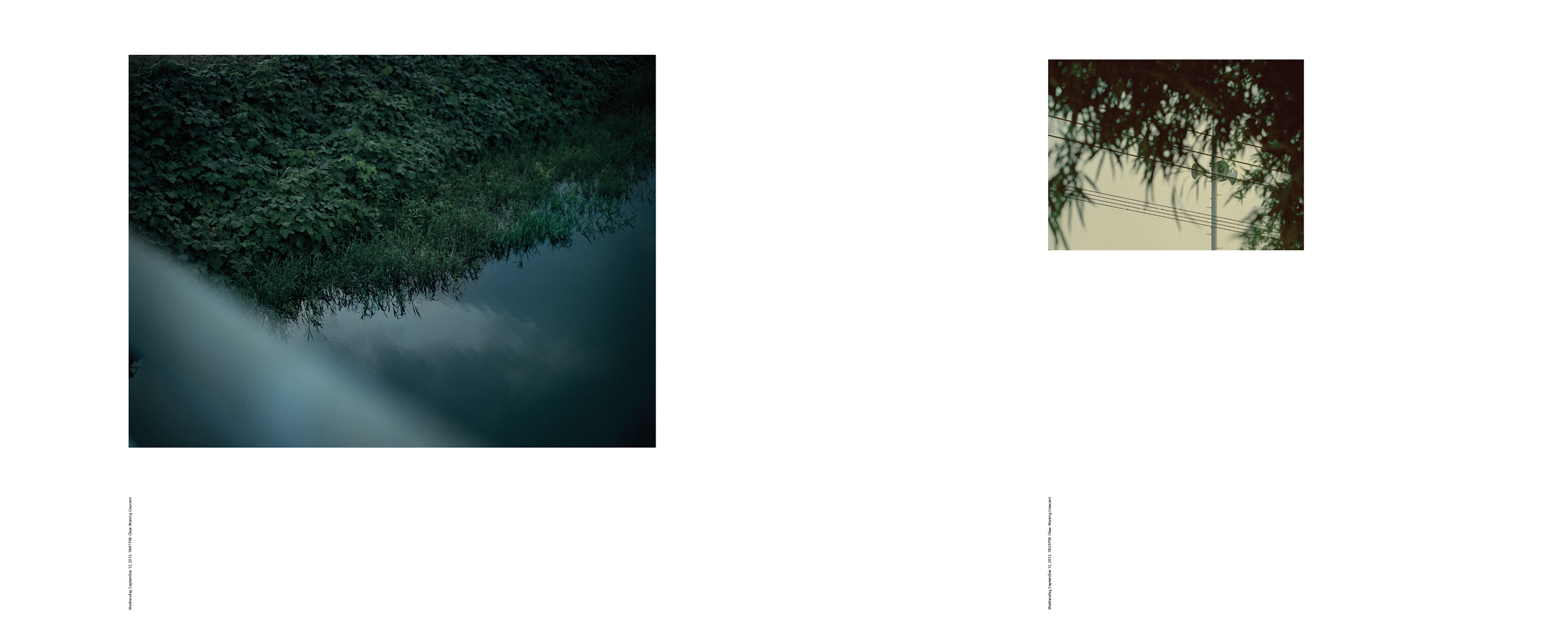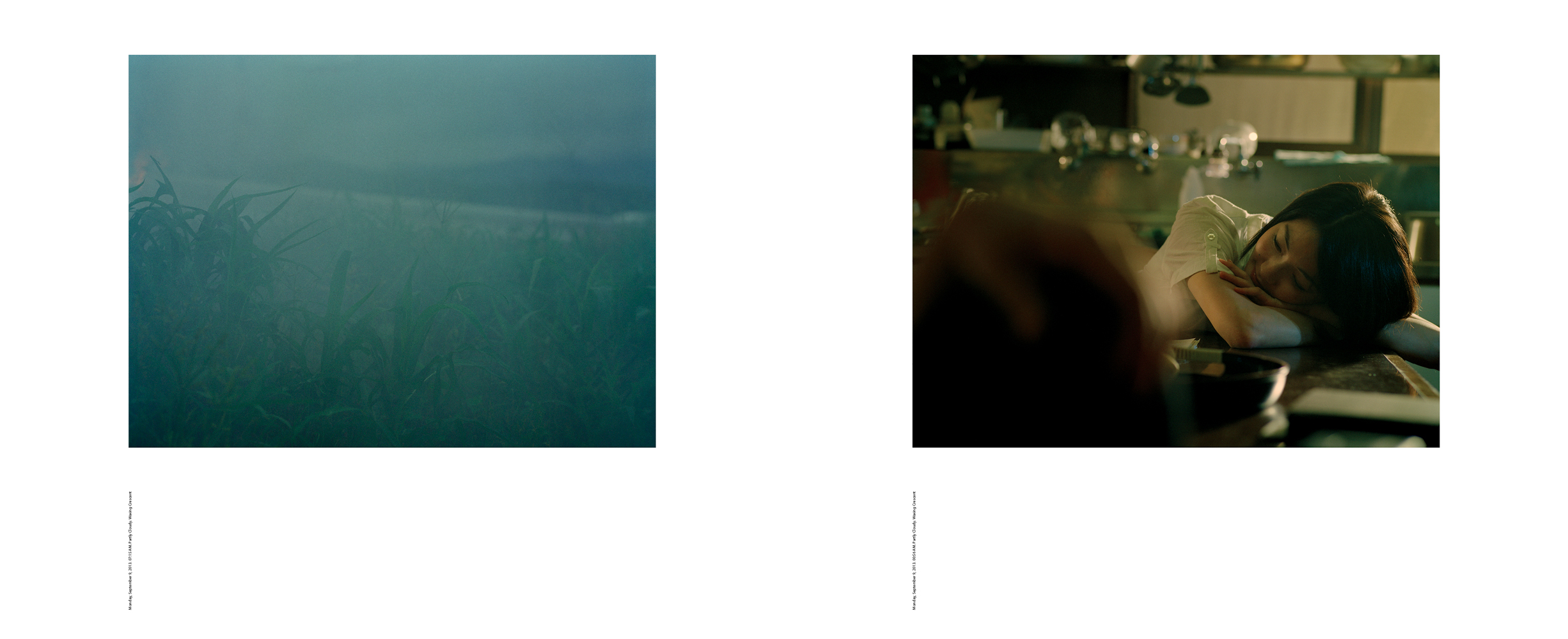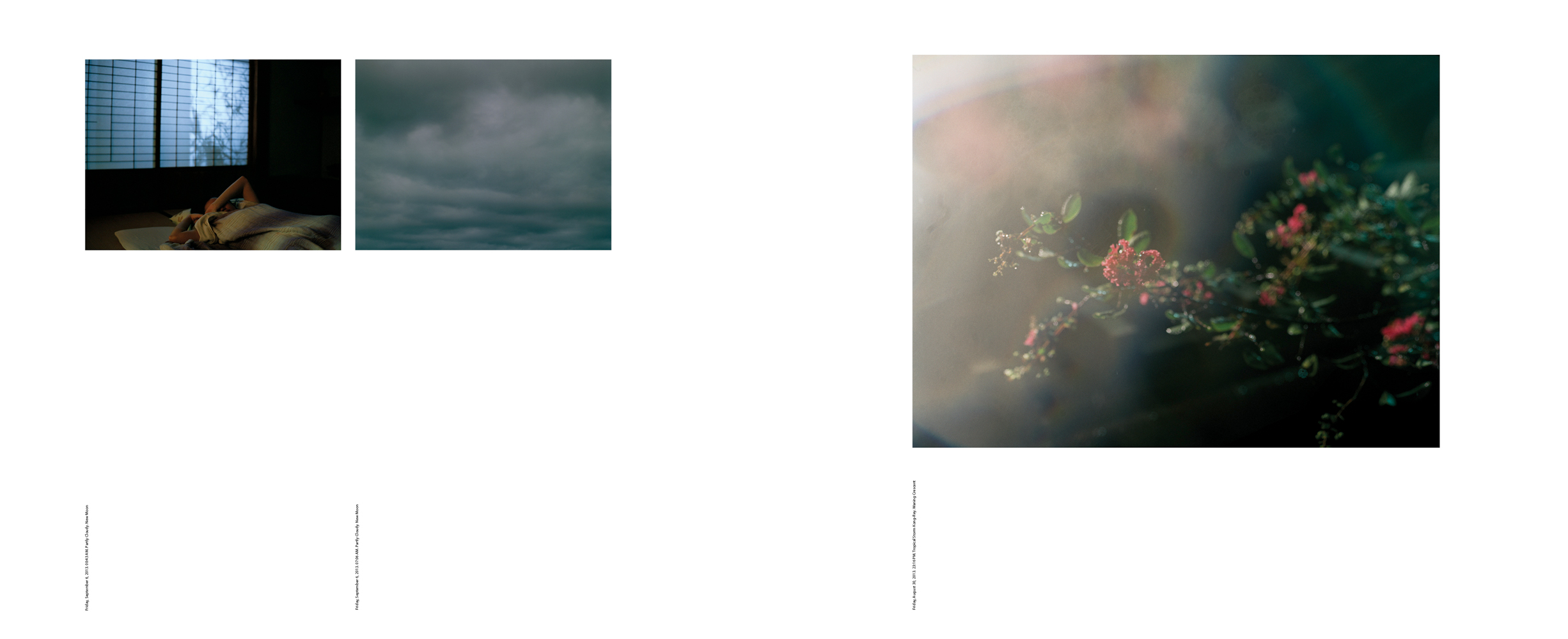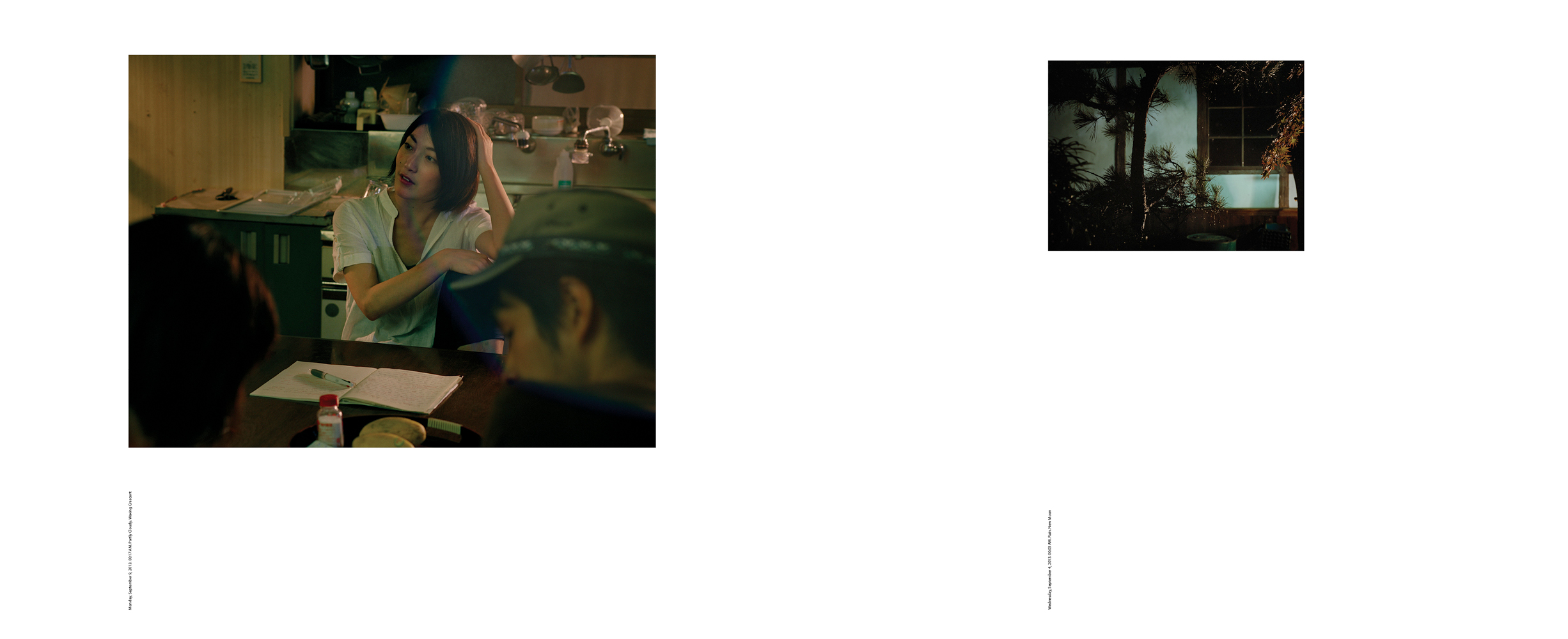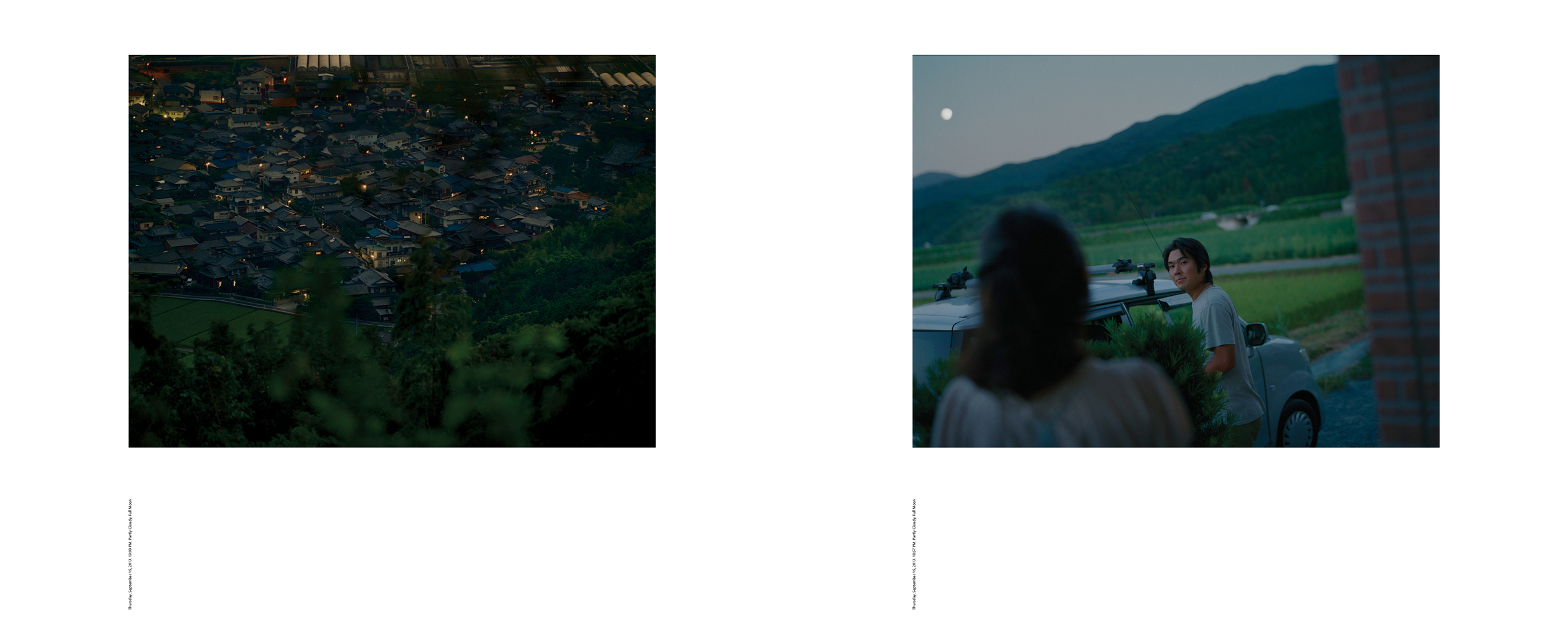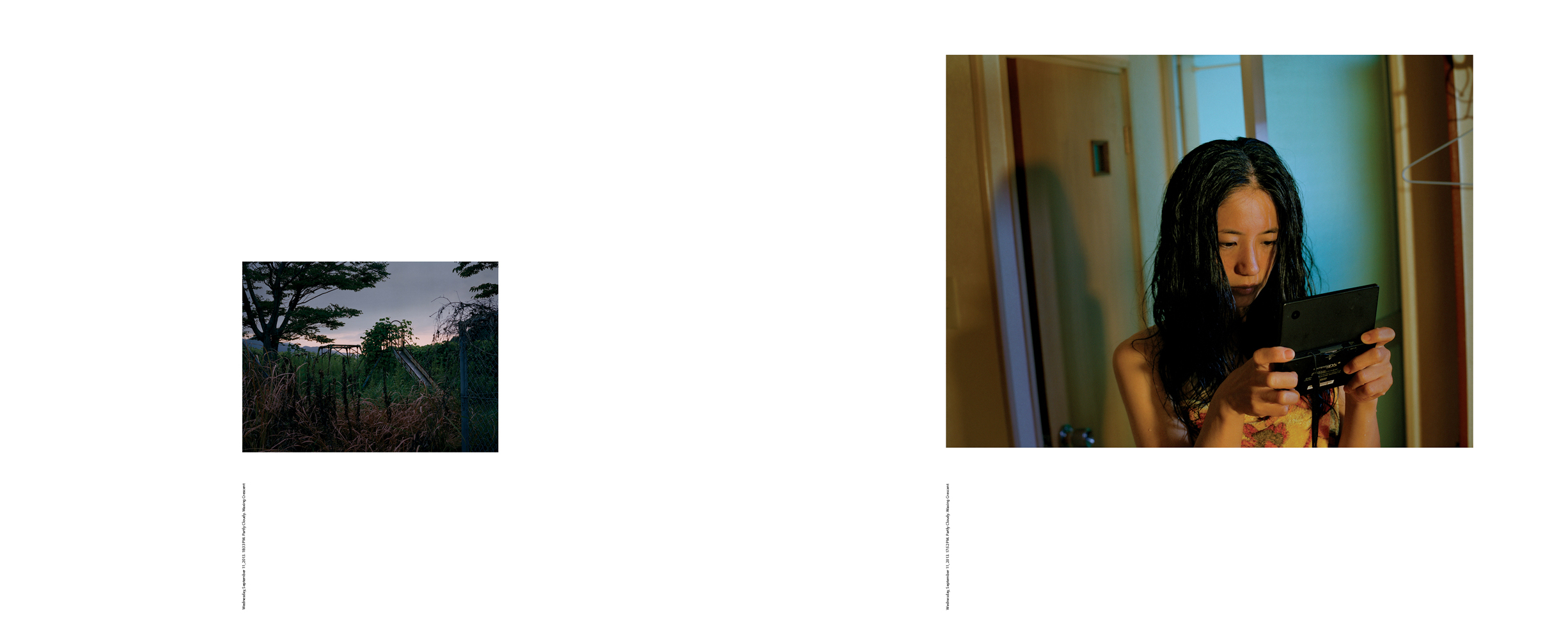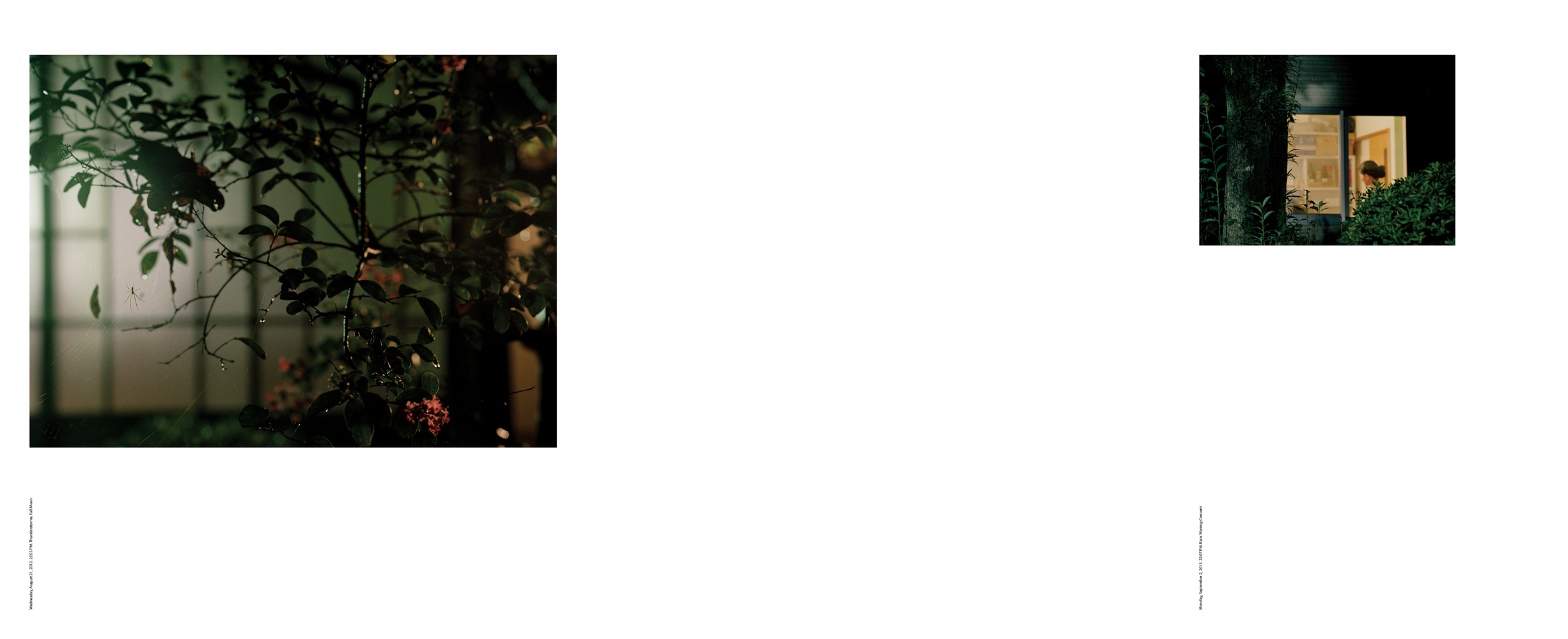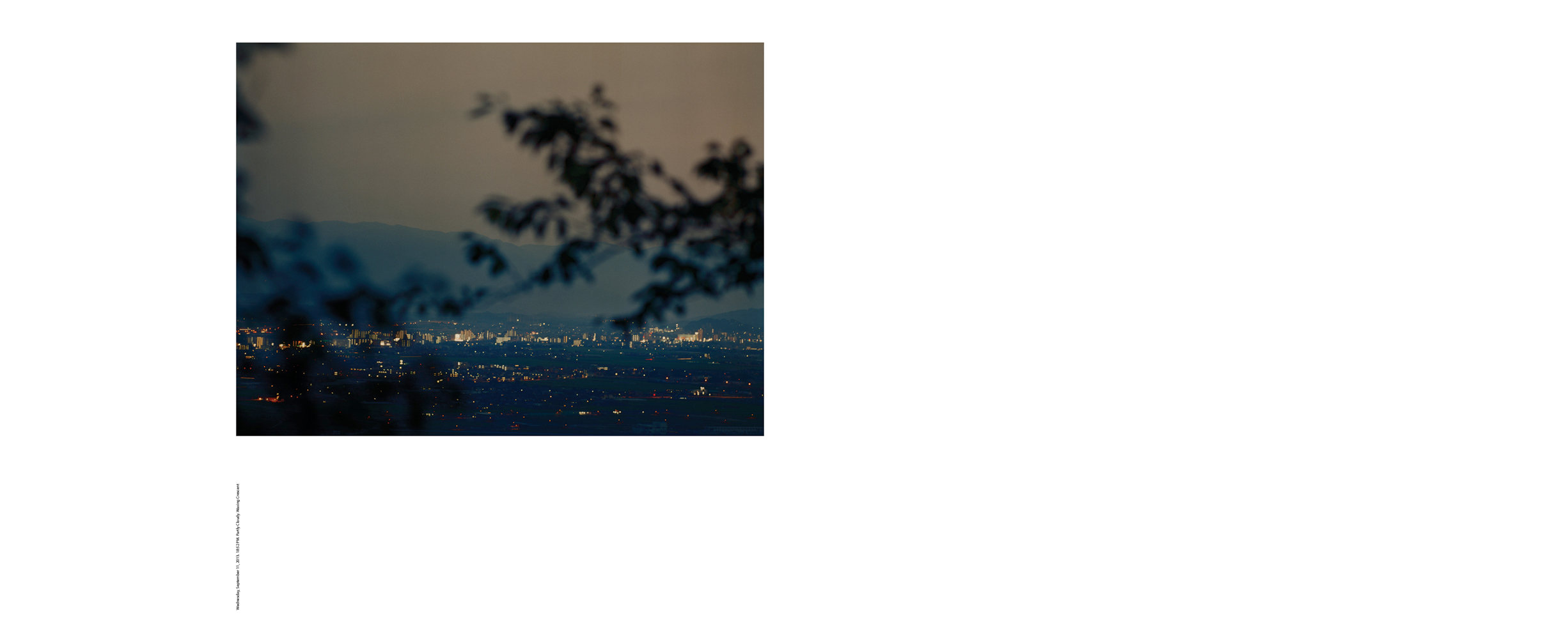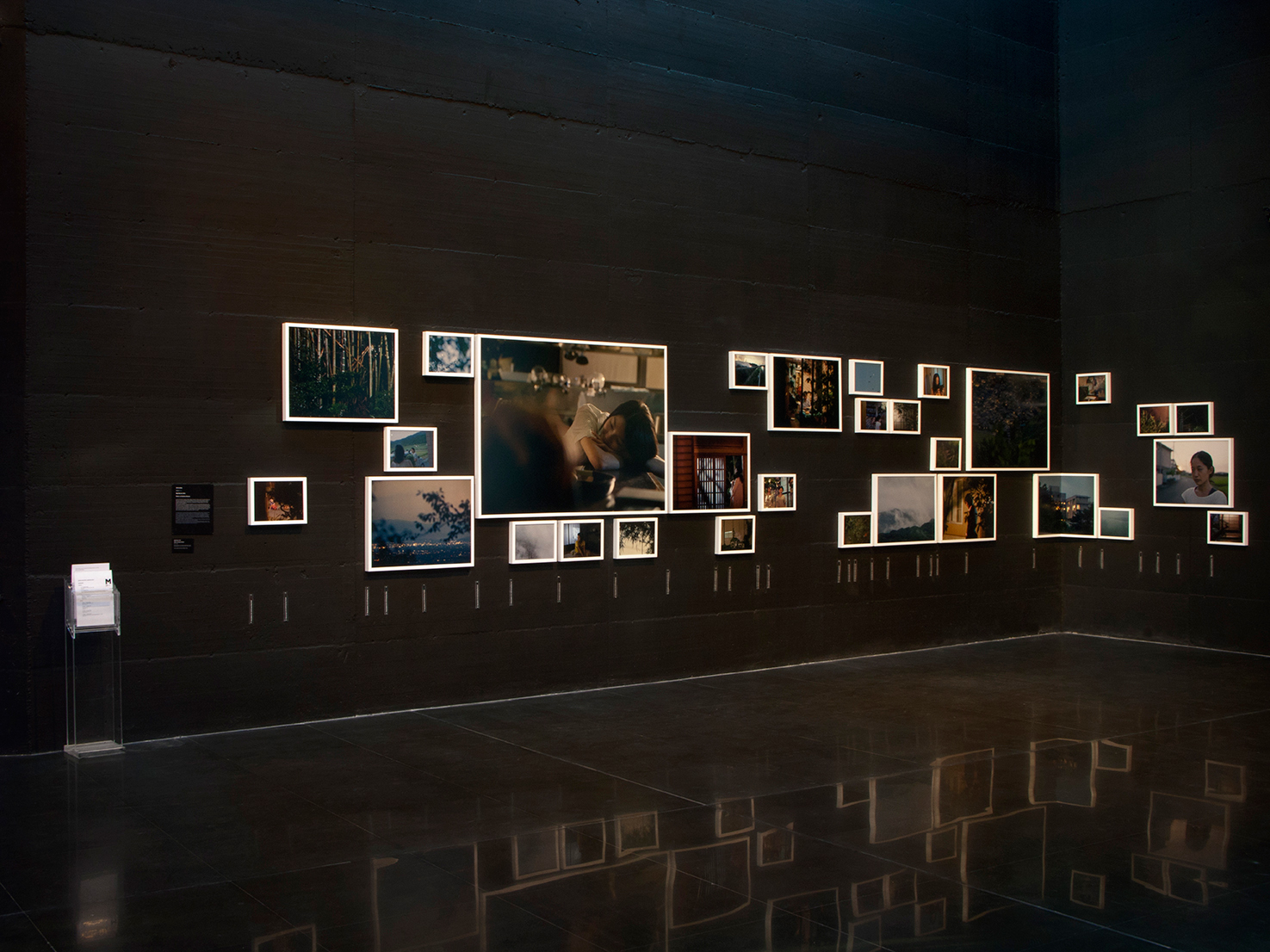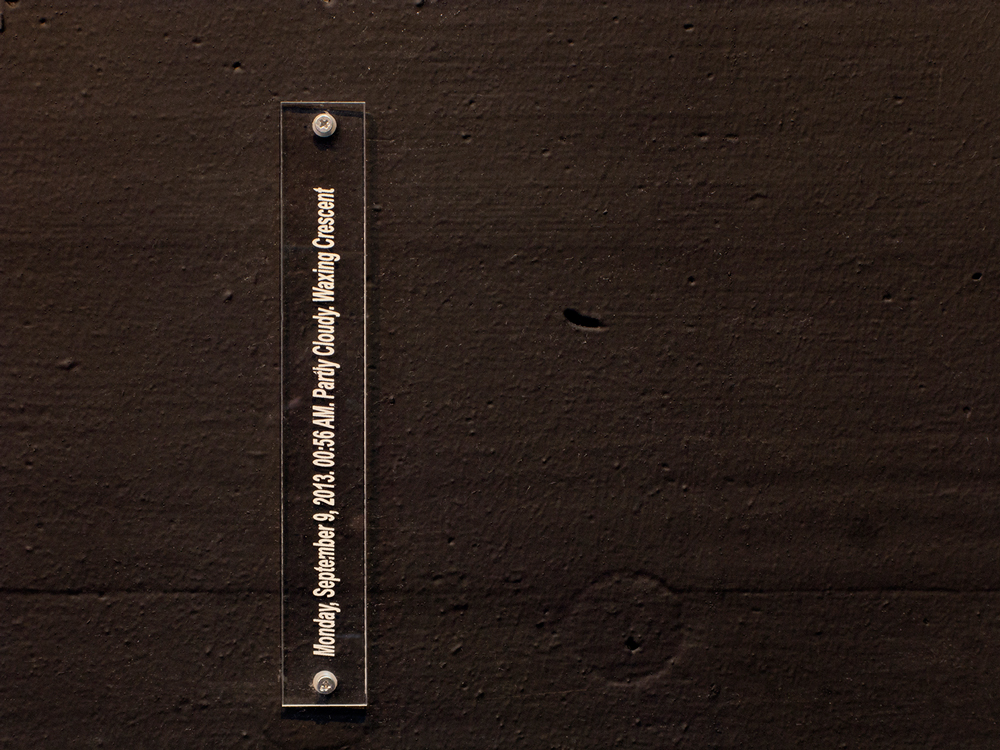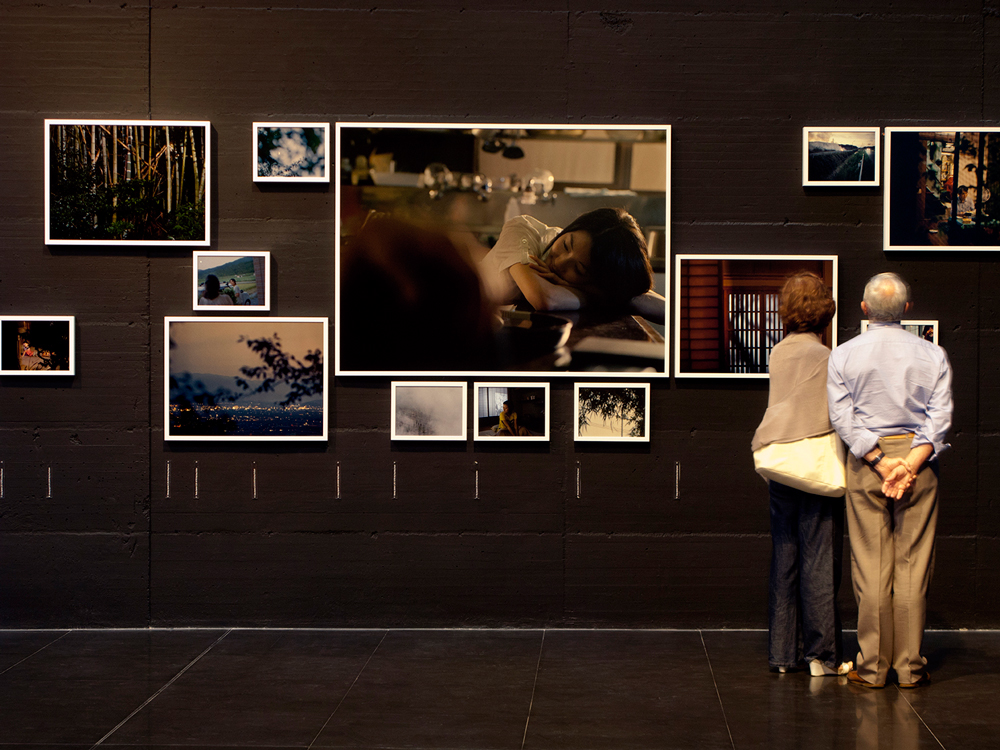白露 | Hakuro, an Itoshima Almanac | 2012-13
Since the dawn of time humans have sought to predict and control natural phenomena. Indeed Homo Sapiens’ continuing existence as a race is in part testimony to our relative success in this task: without such forecasts agricultural endeavors would be doomed to failure. But so deeply ingrained in human society is the concept of time that we can be forgiven for forgetting that this system for chronologically ordering and measuring the duration of events is an entirely cultural and intellectual construct and that in different parts of the world, and in different eras, many alternative calendar systems have been employed (and in fact still are). As case in point, while Japan currently uses the Gregorian calendar, prior to 1873 a lunar calendar system was in place, with the year divided into 24 solar terms (二十四節気). Furthermore, even the “four” seasons, while objectively ‘real’ in the sense that their changing effects are empirically demonstrable, are not quite as predictable, preordained and clear cut as we often casually assume (and rarely are they so compliant as to respect the designated start and end dates appointed for them on official state calendars).
I first began developing the project Hakuro, an Itoshima Almanac in September 2012 while artist in residence in the Itoshima region of Kyushu Island in southern Japan, and then returned to produce the remainder of the work during a second residency between July and September 2013. My intention was to produce a body of work that, as much as humanly possible, would be based on the thoughts, beliefs and values of local people and which would go some way towards bridging what Grimshaw, Owen and Ravetz have called the “textual/visual divide” by using the data resulting from my research as starting point for a visual document rather than presenting these findings in the form of a written text.
The method I devised was to begin by accosting people on the streets, in the fields, at malls or coming out of train stations, and, with the one phrase I’d learned in Japanese (“Excuse me, I am an artist making a photographic project about Itoshima”) tried to convince them to stop and read the printed sheet of paper explaining the project that I thrust into their hands. Those that obliged were asked to leave their email address or phone number, and over the following weeks I carried out what social scientists call Experience Sampling: i.e. I sent out questions by email and SMS, to which respondents could file their answers anonymously using a reply-form on a dedicated website (my hope being that timid members of the public might feel more comfortable revealing their most personal thoughts and opinions to a total stranger if they were secure in the knowledge that they could not be identified).
Messages were simultaneously sent to all participants using bulk-messaging software and ranged from very general questions designed to spot-sample respondents’ behavior – such as “Please write a detailed description of everything you did in the 10 minutes before reading this message” – to the more specific, informed by my particular interrogative frame of reference – for example, “Please describe a positive event that happened to you recently. Why do you think this happened?”, or “What things are you most afraid of at this moment in your life?”.
Once I’d amassed sufficient data, I could simply have begun producing photographs based on the information that I’d received directly from respondents, but it occurred to me that if instead I first passed this material on to a second group of participants, to reinterpret as they best understood, then my influence over the resulting body of work would be reduced to a minority share and the project would stand a greater chance of reflecting the collective concerns of local people in a truly meaningful way. So although I selected participants for the next stage of the project (i.e. the photographic phase) in a manner which no doubt reflected my own subjective interpretation of the information, once I handed this data over to the participants in the photographs, and asked them to interpret the information as they understood it, the data returned to the public realm and took on a new lease of life.
My interest in producing this work lay not only in the tension between the chaotic stories of the ‘real world’ as told to me by the participants and my own instinctive attempts to impose order and control on that information, but also in the ‘data-loss’, distortion and transformation which took place as a byproduct of this hermeneutic process. Our instinct is invariably to lock down natural phenomena, arrest its movement and organic evolution, file it away in ill-fitting and rigid concepts, but our world is ever shifting, mercurial and very much open to interpretation. As Hammersley & Atkinson have noted, “The world does not arrange itself into chapters and subheadings for our convenience” and my hope is that Hakuro reflects this.
Much in the same way that humans endeavor to control and comprehend the untamable and unfathomable forces of nature through chronological, meteorological and astronomical systems, the date-stamp and climatic data which accompany these images are a futile attempt to codify, fix in space and time, and render comprehensible the cruelly irrational void of human experience. As Hakuro’s form and content was not only dictated by phenomenologically acquired data, but also by demotic accounts – that is narratives originating from the inhabitants themselves – I believe this is also a true story. Of course, it is not the Truth, and nor may it even be the truth as either the participants or myself conceive it individually, but nor is it pure fiction or deception and I hope that Hakuro can in some small way be of genuine value in furthering our understanding of the world in which we live.
_____
Hakuro, an Itoshima Almanac was produced between September 2012 and September 2013 in Fukuoka, Japan. The creation of this body of work was made possible thanks to the generous support of the Asian Cultural Council, the Studio Kura artist in residence program, Albus Shashin Labo, and, above all, the people of Itoshima.
< Grab and slide images L-to-R to view the entire project >
「ミネルヴァのフクロウは迫り来る黄昏に飛び立つ」
ヘーゲル
白露 – 糸島生活歴
客観主義者(Objectivist)が提唱して きたドキュメンタリー写真(documentary photography)の真実性に対しては長らく疑問が投げかけられてきたが、私はこのことが有効なドキュメンタリー形態の達成が不可能だということを 意味しているとはとらえていない。むしろ、今日に至るまで、写真というツールが記録という作業に適切には応用されてこなかったのだと考えている。そのた め、私の写真はストーリーボードに基づき、人工的な照明が当てられ、映画のようにシナリオ仕立てとなっていることがあるが、こういった作業手法によりでき あがった写真イメージが、必ずしも他の写真の形式と比べて真実性に関して少しでも劣っているという議論を受け入れるものではない。事実、私の最近の制作活 動の多くは、こういう腐った屍のようなドキュメンタリー的ジャンルに新しい息吹を吹き込みたいという欲求に突き動かされたものだ。澄みきったライカ製のレ ンジファインダーを使って、主観というフィルターを通さず「真実」というものになんとか直接に近づくことができると信じている従来のルポルタージュ写真家 たちとは異なり、自分と最終的なイメージとの間にできるだけ多くの障害物を設けることを私は手法として用いている。被写体を選ぶ瞬間とシャッターを押す瞬 間との時空を拡大することで、私に協力してくれる人たちの主観によりこのような時空の隙間を埋め合わせることができ、最終的な結果としての作品が単なる私 の狭い世界観以上のものを反映するということを期待している。私は、言語学者のジョージ・レイコフ(George Lakoff)に倣い、このような経験的実在論(Experiential Realism)として作品を制作する手法を考えつくに至った。
_____
太 古以来、人間というものは自然現象を予測し、コントロールしようと試みてきた。事実、人間が種として生存し続けているということは、ひとつには人 間がこの目標に対して相対的な成功をおさめている証左であり、そのような予測なしには農業的な試みは破綻するであろう。しかしながら、人間の社会には、時 間という概念が深く根付いており、このようにできごとの持続時間を経時的に整理し計測するという仕組みは、完全に文化的・理知的な産物であり、世界の異な る地域、異なる時代によっては他にも多くの暦システムが取り入れられてきた(実際、現在でも使われていている)という事実をつい忘れてしまうこともある。 代表的な例としては、現在日本ではグレゴリア暦が用いられているが、1873年以前は、太陰暦がその代わりに用いられていており、一年が二十四節気に分け られていた。さらに、「四季」でさえもが、その移ろいによる影響というものが経験的に実証可能であるという意味において客観的には「真」である一方で、わ れわれが無意識に思い込んでいるほどには予測可能でも、運命づけられたものでも、はっきりしたものでもない。(また四季というものは、国の公式な暦で指定 されている始まりと終わりの日付を尊重してくれるほど人間に従順なものではない)
_____
私はまず、2012年9月の九 州の糸島でアーティスト・イン・レジデンスでの滞在中に「白露・糸島生活歴」プロジェクトの制作を開始した。続く 2013年の7月から9月にかけての二度目のレジデンシーの間に作品の残りのものを制作しに糸島へと戻って来た。私の意図は、できる限り人間らしく、地元 の人たちの考え・信条・価値観に基づき、また自分のリサーチから得られたデータを文章化して提示するのではなく、視覚的記録の出発点として用いることで、 Grimshaw、Owen、Ravetzが「テキストと視覚の乖離(textual/visual divide)(2010, P. 149)」と称している乖離状態を減じる一助となるような一連の作品を制作することであった。
私が考えついた方法は、通り、畑、スーパーと いった場所で、また列車から降りてくる人々に、覚えたての「すみません。私はイギリスの写真家で、糸島 に関する写真作品を作っています」という日本語でまずは声をかけることであり、続いて立ち止まってもらい、A4の紙を手に差し出し、プロジェクトについて 書いてある説明を読んでもらおうと努めた。協力してくれる人たちにはメールアドレス、もしくは電話番号を教えてもらい、続く数週間で社会学者が生活サンプ リング(Experience Sampling)と呼んでいる、メールやSMSで質問を送付し、(内気な人たちは、全くの他人に自分の極めて個人的な考えや意見を表明する際に、自分の 素性が知られないということが確実にわかっていれば抵抗感が少なくなると思い)回答者は質問に対し専用ウェブサイトの返信フォームに無記名で回答するとい う手法で調査を行った。質問メッセージは、一括送信シフトを用いて参加者すべてに送信され、その内容は「このメッセージを読む前の10分間にしていたこと を詳しくすべて記述してください」といった回答者の行動をスポットサンプリングするような非常に一般的な質問から、より具体的な、例えば「最近あなたに起 こった良いできごとについて書いてください。なぜそういうことが起こったのでしょうか?」あるいは「今、自分の人生においてどんなことを恐れています か?」といった、私独自の質問基準により情報を得るタイプの質問などに及んだ。
十分な量のデータを収集した後は、単純に回答者から直接得た 情報をもとに写真を制作することもできたけれども、この情報素材を参加者のうちの別の集 団にまず伝えて、自分の理解できる範囲内で再解釈してもらうことで、最終的な作品群に及ぼす私の影響の度合いが低くなり、このプロジェクトにより地元の人 たちが共有する関心事を真に意味のある方法において反映できる可能性が高くなるのではないかという考えが浮かんだ。プロジェクトの次の段階(つまり、写真 撮影段階)では、その情報に私自身の主観的見解が疑いようなく反映された手法で、私は参加者たちに「出演」してもらい、それぞれの回答をどのように提示す るのかについては自分の頭の中に明確な考えがありながらも、いったんこのデータを写真という形態で参加者に渡し、そこから得られる情報を「自分たち」が理 解した通りに解釈してもらうと、そのデータは公共の領域へと戻り、新たな命を吹き込まれることとなった。例えば、「今、自分の人生で最も恐れていることは 何ですか?」という質問に対して、回答者が「自己を失うこと」と答えたとき、私が一人で作業していたとすると、こういった結論の出ない具体性を欠いた回答 に対して精一杯努力して解釈をする状況に置かれるであろうけれども、これを写真の画像に変換するプロセスにおいては、私自身の個人的そして文化的な精神的 問題をシナリオに相当盛り込んだに相違なく、最終的な作品は参加者よりも写真を撮る側について多くを語ることになる。もちろん、これを完全には回避するこ と不可能だ。しかしながら、(もともとの回答者にとって自分の回答がどのような意味を持つと思うかという問いに対して答えてもらうのとは対照的に)被写体 となる人物に他人の回答は個人的にどのような意味を持つのかを答えてもらうことで、この情報が第二のレベルの「地元の知」というフィルターを通され、最終 的な画像に対する私の管理は完全には排除できるものではないけれどもかなり小さなものとった。
事実、私がこの作品を制作したいと思う気持 ちは、参加者たちが私に語ってくれた「現実世界」の支離滅裂な物語と、そういった情報に対して秩序と管理 を課そうとする私自身の本能的な試みとの葛藤の間にあっただけでなく、このような解釈プロセスの副産物として生じる「データ損失」、歪曲、変容などの中に も存在したのだ。われわれの本能は、自然現象を例外なく固定化し、その動きと生物的進化を阻止し、不適合で硬直した概念へと整理するものであるが、われわ れの世界は常に変化し続け、移り気で、自由な解釈が可能なものなのだ。HammerseleyとAtkinsonが指摘しているように、「世界はわれわれ の都合のいいようにそれ自体で章や小見出しになったりはしない」(2007, p. 191)のであり、白露がこのことを反映できればよいと願っている。経時的、気象学的、天文学的なシステムを通じて、扱いにくく不可解な自然の力を管理し 理解しようと試みるのと同様に、作品中の写真にともなう日付印や気象データは、人間の経験の残酷なほど不合理な無用さを体系化し、時間空間的に固定化し、 理解可能なものにしようとするむなしい試みなのだ。
そうは言っても、白露の視覚的表現と内容は、現象学的に得られたデータによってのみ決 定づけられたわけではなく、一般庶民による説明、すなわち、住 民自身から発せられた物語によっても決定づけられたわけであり、私はこれも真実の物語であると考えている。もちろんこれは、(客観主義者が言うところの) 真実ではなく、参加者、もしくは私が個々に抱く(主観的)真実とさえも言えないであろう。しかしながら、これは、完全な創作でも欺瞞でもなく、白露が自分 たちの住む世界をさらに理解する上での真なる価値を多少なりとも持っていて欲しいと願っている。
【参考文献】
ヘーゲル,G W,(1820)『法の哲学』Prometheus Books, p.8.
http://heritageofjapan.wordpress.com/yayoi-era-yields-up-rice/the-advent-of-agriculture-and-the-rice-revolution/who-was-queen-himiko/
Grimshaw, A, Owen, E and Ravetz, A,(2010)『Making Do:アートと人類学の素材、アートと人類学の狭間;現代の民俗学活動(Making Do: The Materials of Art and Anthropology, in Between Art and Anthropology; Contemporary Ethnographic Practice)』Schneider, Arnd and Wright, Christopherほか編, Berg, pp.149.
Hammersley, Martyn & Atkinson, Paul. (2007)『エスノグラフィ:活動の指針(Ethnography: Principles in Practice)』Routledge, pp.191.
Lakoff, G.,(1987)『女性、火、そして危険なもの(Women, Fire and Dangerous Things)』University of Chicago Press.
Itoshima historical map copyright Arita Kazuki. 2013.
Translated by Endo Tetsuya
白露—糸島生活歴は、2012年9月から2013年9月にかけて、福岡県(日本)において制作されました。この一連の作品は、アジアン・カルチュラル・カ ウンシル(ACC)、Studio Kuraのアーティスト・イン・レジデンス・プログラム、アルバス写真ラボ、そしてとりわけ糸島の皆さんの手厚い支援があってはじめてできあがったもので す。
Hakuro, an Itoshima Almanac at MACRO (Museum of Contemporary Art in Rome), Italy. 2014
Archival pigment on Hahnemuehle FineArt paper, dibond, white frames in Obeche, text on plexiglas. Edition of 3 + 1 AP. Dimensions variable.

